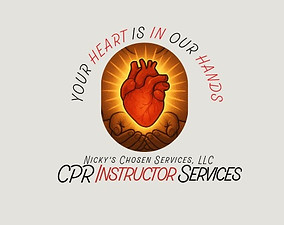AHA SAFETY - ADDITIONAL TRAINING
Safety, Trauma Bleeding, Active Shooter - Active Assailant Training
Student should learn how to control arterial bleeding if it is not stopping with direct pressure or pressure dressings and there is a delay in EMS arriving using tourniquets. Discover what you would need to save yourself and others in an active shooter situation. Learn to prevent the loss of life or limb in emergencies like this.
Active Assailant Training
-
Option 1: Run
-
Option 2: Hide
-
Option 3: Fight
-
Getting away from the shooter or shooters is the top priority.
$49.00 per person
An active Shooter situation is not common and considered very rare, however if you find yourself in this type of situation, you must respond fast. We know that individuals should be prepared for active shooter events and should trainied to make their own life-saving decisions.
Getting away from the shooter or shooters is the top priority. Leave your belongings behind and get away. Help others escape, if possible, but evacuate regardless of whether others agree to follow. Warn and prevent individuals from entering an area where the active shooter may be. Call 9-1-1 when you are safe and describe the shooter, location and weapons.
Get out of the shooter’s view and stay very quiet. Silence all electronic devices and make sure they won’t vibrate. Lock and block doors, close blinds and turn off lights. Don’t hide in groups. Spread out along walls or hide separately to make it more difficult for the shooter. Try to communicate with police silently. Use text message or social media to tag your location or put a sign in a window. Stay in place until law enforcement gives you the all clear. Your hiding place should be out of the shooter's view and provide protection if shots are fired in your direction.
The ‘Stop the Bleed’ campaign directed by the National Security Council Staff and The White House. The purpose is to teach basic actions to stop life threatening bleeding. Military medicine research during the Afghanistan war is the basis of the training. We now use the research to educate the general public.
Commit to your actions and act as aggressively as possible against the shooter. Recruit others to ambush the shooter with makeshift weapons like chairs, fire extinguishers, scissors, books, etc. Be prepared to cause severe or lethal injury to the shooter. Throw items and improvise weapons to distract and disarm the shooter.
Bloodborne Pathogens
-
American Heart Association
-
Two Year Certification
-
Option 3: Fight
-
Hands on Training.
-
Often combined with other classes for a discounted rate.
$46.00 per person
Optional Student Workbook $18pp
The American Heart Association (AHA) Heartsaver® certified Bloodborne Pathogens course is designed to teaches employees how to protect themselves and others from being exposed to blood or blood-containing materials. This course is designed to meet OSHA requirements for bloodborne pathogens training when paired with site-specific instruction. AHA’s course uses the PACT acronym (Protect, Act, Clean, Tell) and slogan, “Make a PACT, Know How to Act,” to help students learn and easily recall bloodborne pathogens training.
Students learn how to:
-
Protect themselves from blood or blood-containing materials.
-
Act quickly and safely.
-
Clean the area that has blood or blood-containing materials.
-
Tell their supervisor about the incident
Protect themselves from blood or blood-containing materials. Act quickly and safely. Clean the area that has blood or blood-containing materials. Tell their supervisor about the incident.
Trauma Bleeding Control
-
Can be Combined with other Class like Bloodborne Pathogens
-
Two Year Certification
-
Hands on Training
-
Certification Card
-
Fast Validation
$39.00 per person
Trauma Bleeding Control is a life-saving course designed for the lay responder. Guidelines recommended by the White House’s “Stop the Bleed Campaign”. Students learn how to control arterial bleeding. Learn direct pressure or pressure dressings using tourniquets. You can prevent the loss of the limb in a bleeding emergency.
These include natural disasters, amputation, knife or gunshot wounds. Hands on practice include bandaging, packing wounds, shock and using a tourniquet. Someone can bleed to death in minutes. The scene is critical if damage to an artery in the leg or arm. The Bleeding Control course takes an hour plus to complete. A trainer guides the class through hands on methods of bleeding control. Students practice placing tourniquets on an extremity. Learn to pack a wound with gauze using both hands.
Some feel the course is a byproduct of active shooter scenarios. Bleeding Control saves lives in other traumatic scenarios such as car wreck, amputation or punctures. In this course, participants will learn the String of Survival. Learn the detailed use of both CAT and SWAT Tourniquet. Participants will also receive a Trauma Control Certification.
The ‘Stop the Bleed’ campaign directed by the National Security Council Staff and The White House. The purpose is to teach basic actions to stop life threatening bleeding. Military medicine research during the Afghanistan war is the basis of the training. We now use the research to educate the general public.
A person can die within 5-10 minutes due to uncontrolled bleeding. Proper bleeding control methods—including hand techniques, dressings, and tourniquets—can make all the difference.
Group and Corporate
Call for Pricing
-
American Heart Association
-
Pricing varies depending on type of class and number of participants.
-
Please call for Quote
-
2 Year Certification Class
-
Fast Validation
The American Heart Association (AHA) Heartsaver® certified First Aid & CPR/AED course is designed to teach students CPR for victims of all ages, use the automated external defibrillator (AED) and relief of choking. Instruction is given on recognition of life threatening emergencies and basic CPR techniques. It is available to anyone desiring, or required, to obtain the knowledge and skills taught at this level. Upon successful completion of skills demonstration, students will receive their Heartsaver® CPR/AED course completion card which is valid for two years.

